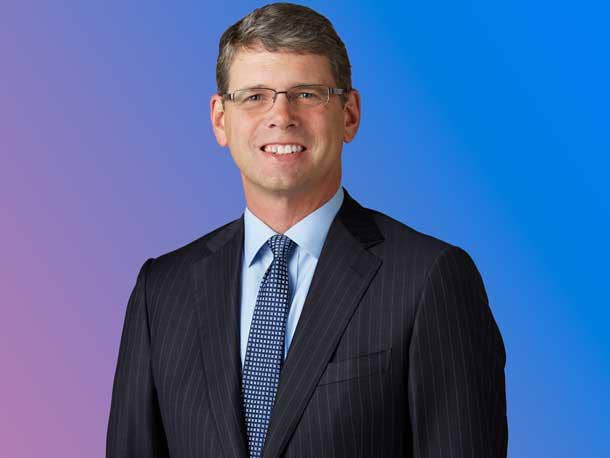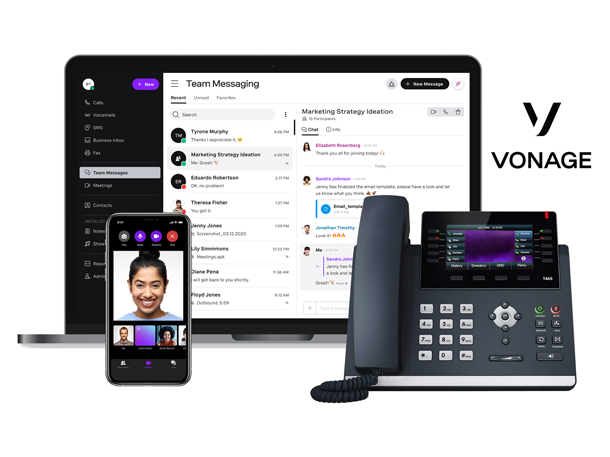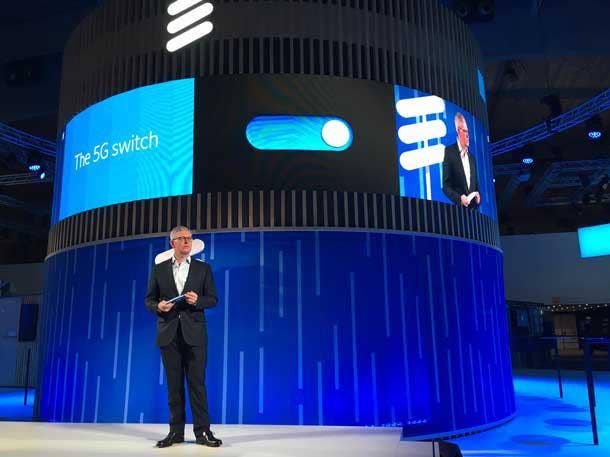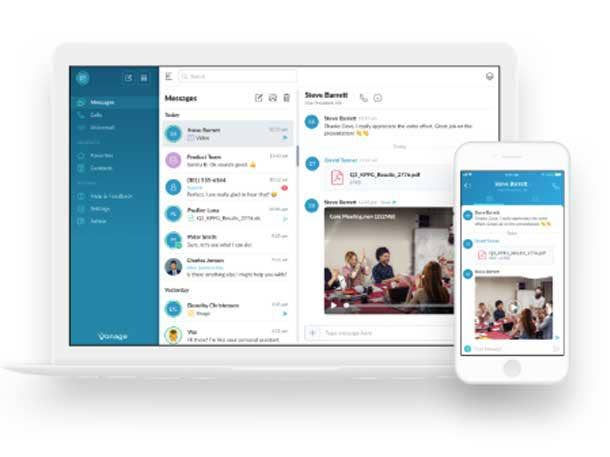Vonage CEO Rory Read: ‘Winners and Losers Aren’t Set’ For Next-Gen Business Communications
‘This vision of moving to transactions … to 360-degree engagements across all engagement vectors. I think it‘s going to drive just a huge amount of business. This business is going to grow to billions and billions of dollars each quarter, each week [and] each year. The combination with Ericsson only accelerates that,’ the company’s tech veteran CEO tells CRN.

One Platform To Rule Them All
Vonage, the business cloud communications company that’s now a part of Swedish networking and telecom equipment maker Ericsson, has been busy laying the groundwork for the next generation of business communications.
The Holmdel, N.J.-based company offers a communications platform that includes unified communications (UC) contact center, and a slew of APIs that can be used to inject voice, messaging, video and data capabilities into anywhere a business requires. Right now, communications largely flow one-way from systems to end users – think, push notifications – but Vonage thinks the next step in business communications will include two-way conversations around commerce, support, and services. And businesses have to be ready, said Vonage CEO Rory Read.
Read has been sitting in the CEO seat for the past two years and he’s no stranger to evolving a business. Read came to Vonage from Dell where he served in a variety of positions over five years, including chief operating executive. Prior to that, he served as CEO of semiconductor giant AMD. Read was on-hand during Dell’s massive EMC buy, which put him in a great position to lead Vonage through its own acquisition. Ericsson in July completed its acquisition of Vonage Holdings.
Now, 76 percent of the carrier’s business is generated by business customers. Vonage’s business segment alone represents the third-largest pure play cloud communications company in the market in terms of revenue, and that piece of the pie is only going to get bigger now with the backing – and balance sheet – of Ericsson.
Vonage is poised to become one of the leaders in embedded communications as more companies evolve their business. That will mean billions of dollars in revenue for Vonage and its channel ecosystem – a big area of investment for the company, Read said.
Read caught up CRN on its evolution over the last two years, its investments and commitment to growth now that the company is part of Ericsson, why the communications market “isn’t that crowded” and where the “massive” areas of opportunity in business communications lay for the channel.
What follows are excerpts from the conversation.

What has Vonage been doing in the last two years to enable the next generation of business communications?
What’s interesting about Vonage is it’s been a company that’s always focused on innovation and what’s next. About six years ago, they began this pivot towards cloud communications and building a platform for that capability and I think that was spot-on. Over the past two years, what we really focused on was creating the operational discipline, the focus across the team, the decision making, and the customer focus that allows us to build this true Vonage communication platform that allows multimodal communications to be used by our customers across UC, contact center [CC] and across composable APIs. Our focus has been really taking what was a good strategy and aligning all of our capabilities and resources to accelerate that journey. In the past two years, we‘ve seen our growth rates in APIs well exceed the market. We’ve seen a return of our cloud-based UC and CC back to industry growth levels and above. And we‘re seeing this migration in waves. We’re seeing waves of mobility — 4.5 billion smartphones — combined cloud and 5G networks that are creating the latency, performance and security that drive this communications revolution.
Every customer is going to make a move in the way they engage their customers and team members. Today we see it more transactional — you‘ll get a notification that your coffee is ready, or your airplane is at the gate, or your Uber is arriving — that’s usually driven through Vonage APIs and our infrastructure. But we are going to see is a move toward two-way conversation around commerce, support and service. Ultimately where it‘s going is this 360-degree ubiquitous connection point across all vectors of communications — commerce, support, service, in every vertical and every company. And the winners and losers aren’t set. Every company is going to move in this direction and how they‘re going to do it is they’re going to embed these multimodal communications — voice, video, chat — through APIs. We can effectively deliver any message, any conversation from anyone basically on the planet because of the structure that we‘re built on. I think this is going to drive the next 10-20 years. We’re at the beginning of this journey. And it‘s not a question of if, it’s when everyone will move in this direction because consumers and customers are going to demand to interact with companies anywhere, at any time. And they want their experiences to be physical, virtual and mobile, and it‘s really the convergence of the physical and virtual of digital worlds coming together over the next 5-10 years. That combination is going to create this next generation of engagement. And that’s what we‘re really trying to build with the Vonage communication platform. A platform that our customers can use to take them on this journey, whether its UC, CC, composable APIs or conversational commerce, they’re going to be able to do this. Our mission is to enable these next generation communications that are obviously more flexible, intelligent, personal, and enable businesses and their team to enhance the culture of collaboration and engagement with customers from anywhere. It‘s about enabling them to do what’s next now — not in three years — but now. And I think it‘s been an incredible transformation.

How does Vonage differentiate itself in the crowded communications market?
I don’t think it’s actually that crowded. I think a lot of people say they have a UCaaS and CCaaS solution and they have a communication platform, but I really don‘t think there’s very many. We‘re one of a few that actually have a full communications platform. Most people are trying to build that out. I think what differentiates us is that we’ve been a first mover in this journey around composable APIs, the combination of UC and CC, and this vision of moving to transactions, to conversations and to 360-degree engagements across all engagement vectors. I think it’s going to drive just a huge amount of business. This business is going to grow to billions and billions of dollars each quarter, each week [and] each year. And I think we’re really at that point.
The combination with Ericsson only accelerates that. Now we have the investment arm of a company with 100,000 colleagues and 26,000 engineers. They see the same opportunity and they want to build on top of these differentiated 5G networks that allow these composable APIs to create that next generation of engagement and communication. And we‘re going to do that with enterprises, we’re going to do that with CSPs and with small and medium businesses. It‘s that combination of their knowledge of 5G — because think about it, these concepts around multimodal communication been around for 20 years. Why has it taken off now? Because there was a pandemic and societal acceptance accelerated. You expect to be connected at all times, at any point, with any company and you expect to stream your information and content from anywhere on the planet. This is only going to accelerate. By doing this combination with Ericsson, we have leadership thinking in the network, we have engineering capacity, the investment arm, and we have our knowledge and leadership in cloud and cloud communications. I think that powerful, our solution combination is going to be really differentiated. And I don’t think it’s crowded. The winners will emerge the next three to five years and I think we have a great opportunity to be one of those big winners.

How much are partners contributing to Vonage's growth and how important will they be now that the acquisition is completed?
I’ve been a channel-first kind of concept player my entire career. I believe fundamentally in the multiplying effect of the channel. I will go to all of the channel events this year in this space. I believe in the channel reach and believe that the channel has a differentiated relationship with the customer. I think our UC and CC solutions give us a great opportunity for us to continue to grow with them. Secondarily, I [believe] in bringing these composable APIs as a whole new revenue flow for channel players as they lead their customers on this journey to this 360-degree engagement set of communications.
The channel‘s got a huge multiplying effect. We’re investing in that and we’re seeing our fastest growth in that area. I think the combination of our Vonage communication platform, UC, CC and composable APIs, are a great opportunity for our channel partners to create even deeper relationships with their customers. [Partners] are so interested in that space because they can see the differentiated experience [APIs] can create for their customer, the margin expansion opportunity for them, and that deeper trusted relationship. They’re looking at the relationship with Vonage as this company that can help them on that journey with all the pieces that they need. We’ll double our channel coverage this year, and then we’ll double it again next year.

What do you want partners to know about Vonage’s strategy now that it’s part of Ericsson?
Many of our competitors are going through a difficult period. They‘ve seen a significant erosion in the marketplace and the macro looks challenged and could get worse. We have the financial backing, the resources, the organizational support, and the investment to capture this market. And that’s what we were trying to do. Ericsson [has] 100,000 team members, a very healthy business, leadership knowledge in 5G networks. You combine that with our cloud leadership knowledge at Vonage and you say, ‘Hey, do you like this? Or do you like some of these standalone companies that are going to struggle to find financing?“ We have the investment and the commitment to grow. I think that’s a really important factor. And the expertise that [Ericsson] has in 5G is going to allow us to create differentiated use cases, [which] will allow our customers and our partners to take advantage of that new technology fast. That‘s why we did it. It was the right move.
My advice to the partners would be to partner with a communication platform leader that can help you with the technology to take customers on this very strategic, multi-year journey and offer them a set of key capabilities that they build a set of services around today, but also future-proof that investment as they go on this journey from transactions to conversational, to fully 360-degree engagement for their customers and for their team members.

What are your goals for your third year at Vonage?
I’ve worked for a lot of places. Why did I come to Vonage? I came because I believe that it was in the right place at the right time where this industry transformation was really just beginning. And I think this combination with Ericsson only accelerates our ability to bring better and more enhanced solutions in this communication revolution.
My goals are quite straightforward. We wanted to create this communication platform that accelerates the world‘s ability to connect. We’re going to integrate with Ericsson in a way that allows for this concept of one plus one equals three — we’re better together. Remember, I spent three years of my career working on the combination of Dell EMC and that was the largest tech deal ever done. This one — the combination of Ericsson and Vonage — has a unique value proposition for our customers and our partners. And I think it positions us so well. Our focus is to build that platform, accelerate the world‘s ability to connect [and] to create these differentiated, next-generation solutions. When we build them on 5G and 6G networks, we’re going to be the first mover. We‘re going to create differentiated use cases that no one can match. That’s pretty cool. We’re in the right place at the right time where the market needs this solution and with this combination, we can unlock it that much faster.